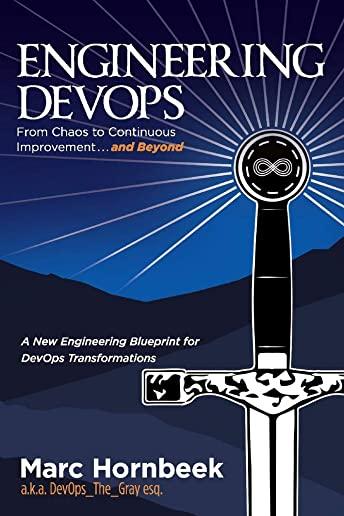
Hornbeek, Marc
product information
description
3This book is organized as an engineering reference guide for DevOps, presented in five parts as follows: Part I: What Is Engineering DevOps and Why Is It Important? is organized into three chapters. Chapter 1, What is Engineering DevOps?, explains engineering concepts and terms used in this book that have proven to work with many clients I have encountered during my consulting experiences. My depiction of a DevOps Engineering Blueprint is presented for as a useful, practical big-picture reference for discussing engineering the major parts of DevOps. Chapter 2, Nine Pillars of DevOps, describes a classification of DevOps practices that I have found to be useful characterization of DevOps engineering practices that can be readily applied when engineering DevOps implementations. Chapter 3, Why Is Engineering DevOps Important?, explains the benefits of taking an engineering approach to engineering DevOps. Part II: Engineering People, Processes and Technologies for DevOps provides a comprehensive explanation of recommended engineering practices for the higher levels of the DevOps Engineering Blueprint. DevOps transformations are not normally understood or applied using strict engineering principles. Engineering practices are presented in nine chapters as follows: How Should DevOps Be Engineered? includes a discussion of DevOps Engineering Maturity Levels for each of the Three Dimensions (People, Process, and Technology), Twenty-Seven DevOps Engineering Critical Success Factors, and Lean DevOps Value-Stream Pipeline Engineering. I describe recommended engineering practices for the top layers of the DevOps Engineering Blueprint in the next chapters, which include Value-Stream Management (VSM), Application Release Automation (ARA), Version Management, Continuous Security (a.k.a. DevSecOps), Service Catalog, Governance, Site Reliability Engineering (SRE), Disaster Mitigation, and Recovery. Part III: Engineering Applications, Pipelines, and Infrastructures Engineered for DevOps provides a comprehensive explanation of recommended engineering practices for the lower levels of the DevOps Engineering Blueprint, presented in six chapters as follows: DevOps Applications Engineering, CI/CD Pipelines Engineering, Elastic Infrastructure Engineering, Continuous Test Engineering, Continuous Monitoring Engineering, and Continuous Delivery and Deployment Engineering.Part IV: DevOps Seven-Step Transformation Engineering Blueprint provides a description and tools for my approach to realize and evolve DevOps. The seven steps are Visioning, Alignment, Assessment, Solution Engineering, Realization, Operationalize, and Expansion. By using these tools, DevOps leaders and practitioners can create, implement, operate, and expand their DevOps across the organization. The chapter goes further to explain how to evolve DevOps from a successful First Way DevOps (Continuous Flow) towards realizing more advanced Second Way (Continuous Feedback) and Third Way (Continuous Improvement) DevOps implementations. This part includes a discussion of Beyond Continuous Improvement--a look at emerging technologies that are shaping DevOps in the future and how you can prepare your DevOps and yourself for the future. This part includes a discussion of how to set up an effective DevOps engineering training program that supports continuous learning of DevOps engineering skills needed to maintain and enhance DevOps.Part V: Appendices, Continuous Learning, and References includes materials and sources that I have found most useful for engineering DevOps.
member goods
No member items were found under this heading.
notems store
Return Policy
All sales are final
Shipping
No special shipping considerations available.
Shipping fees determined at checkout.







